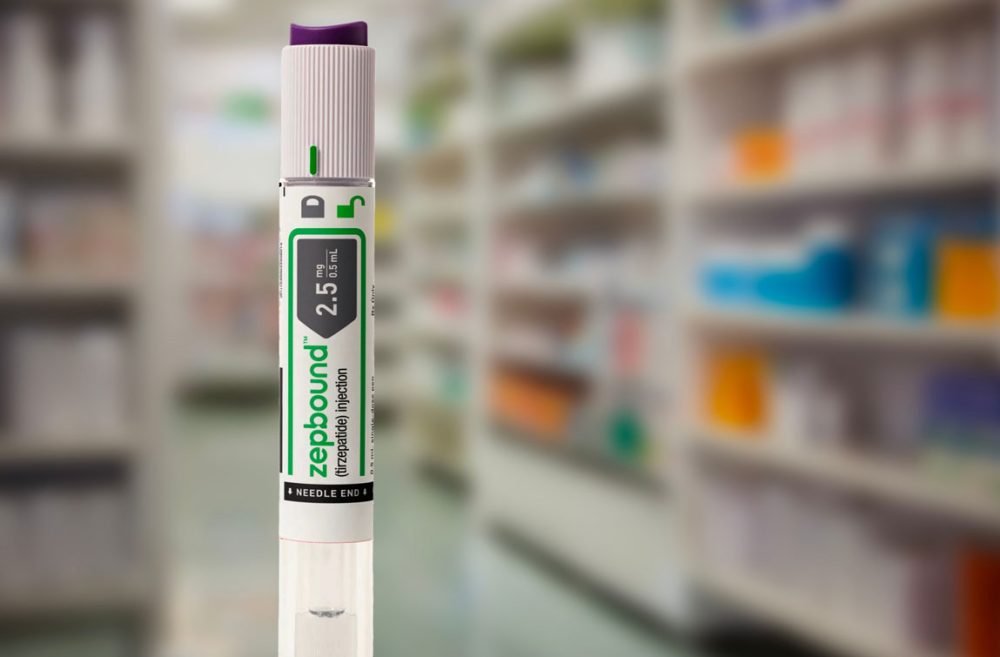Advertisment
Zepbound (tirzepatide) achieved additional 6.7% weight loss following a 36-week open-label lead-in period, for a total mean weight loss of 26.0% from study entry over 88 weeks – Eli Lilly

Detailed results from SURMOUNT-4, which showed Zepbound (tirzepatide) injection achieved superior mean percent change in body weight compared to placebo in adults with obesity or overweight with weight-related comorbidities, excluding type 2 diabetes, were published in The Journal of the American Medical Association (JAMA).
Zepbound met the primary endpoint of mean percent change in body weight, and all key secondary endpoints for both estimands compared to placebo 52 weeks after randomization.
Study Design : SURMOUNT-4, a phase III study evaluating the safety and efficacy of Zepbound compared to placebo, had two periods. Lead-in period: 36-week open-label period during which participants took Zepbound at the maximum tolerated dose . Double-blind treatment period: 52-week treatment period during which participants were randomized to either continue on Zepbound or switch to placebo. SURMOUNT-4 utilized a maximum tolerated dose of 10 mg or 15 mg once-weekly. The starting dose of 2.5 mg Zepbound was increased by 2.5 mg every four weeks until maximum tolerated dose was achieved. Participants who tolerated 15 mg continued on 15 mg as their maximum tolerated dose. Participants who tolerated 10 mg but did not tolerate 15 mg continued on 10 mg as their maximum tolerated dose.
“Patients, providers and the public do not always understand obesity is a chronic disease that often requires ongoing treatment, which can mean that treatment is stopped once weight goals are met,” said Jeff Emmick, MD, Ph.D., senior vice president, product development, Lilly. “However, studies like SURMOUNT-4 show that continued therapy can help people living with obesity maintain their weight loss.”.
After 36 weeks of open-label Zepbound, participants, who would then go on to be randomized to Zepbound or placebo in the double-blind period, experienced a mean weight reduction of 20.9% from mean body weight of 236.6 lb. (107.3 kg) at study entry. Primary and key secondary endpoints assessed efficacy during the double-blind period (week 36 to week 88) and over the course of the entire treatment period (week 0 to week 88). For both estimands, Zepbound met the primary endpoint and all key secondary endpoints.
Additional secondary endpoints showed that Zepbound was also associated with improvements in BMI, fasting insulin, lipids, blood pressure, and health-related quality of life.
The overall safety profile of tirzepatide in SURMOUNT-4 was similar to previously reported SURMOUNT and SURPASS trials. The most commonly reported adverse events in SURMOUNT-4 were gastrointestinal-related and generally mild to moderate in severity. During the Zepbound lead-in treatment period, the most frequent adverse events were nausea (35.5%), diarrhea (21.1%), constipation (20.7%) and vomiting (16.3%). During the double-blind period, the most frequent adverse events for Zepbound and placebo, respectively, were diarrhea (10.7% vs 4.8%), nausea (8.1% vs 2.7%), vomiting (5.7% vs 1.2%), COVID-19 (14.0% vs 14.9%) and upper respiratory infection (2.4% vs 5.4%). Treatment discontinuation due to an adverse event occurred in 7.0% of enrolled participants during the 36-week open-label lead-in treatment period, mainly due to gastrointestinal events. After the open-label lead-in period, treatment discontinuation rates due to adverse events were 1.8% (Zepbound) and 0.9% (placebo).
About SURMOUNT-4 and the SURMOUNT clinical trial program; : SURMOUNT-4 (NCT04660643) was a multi-center, randomized, double-blind, parallel, placebo-controlled trial comparing the efficacy and safety of tirzepatide to placebo in adults with obesity or overweight with weight-related comorbidities, excluding type 2 diabetes. The trial had two periods in which treatment was given as an adjunct to a reduced calorie diet and increased physical activity: a 36-week open-label lead-in period in which all participants took tirzepatide, and a subsequent 52-week double-blind treatment period in which participants were randomized to either continue on tirzepatide or switch to placebo, in addition to increased physical activity and reduced-calorie diet. The trial enrolled 783 participants across the U.S., including Puerto Rico, Argentina, Brazil and Taiwan into the open-label lead-in period and 670 participants were randomized in a 1:1 ratio in the 52-week double-blind treatment period to receive tirzepatide or placebo. The primary objective of the study was to demonstrate that tirzepatide is superior in percent change in body weight from randomization at 36 weeks to 88 weeks compared to placebo.
See-
“Continued Treatment With Tirzepatide for Maintenance of Weight Reduction in Adults With Obesity: The SURMOUNT-4 Randomized Clinical Trial”; Louis J. Aronne, MD, Naveed Sattar, MD; Deborah B. Horn, DO, MPH; et al for the SURMOUNT-4 Investigators. JAMA. Published online December 11, 2023. doi:10.1001/jama.2023.24945.





